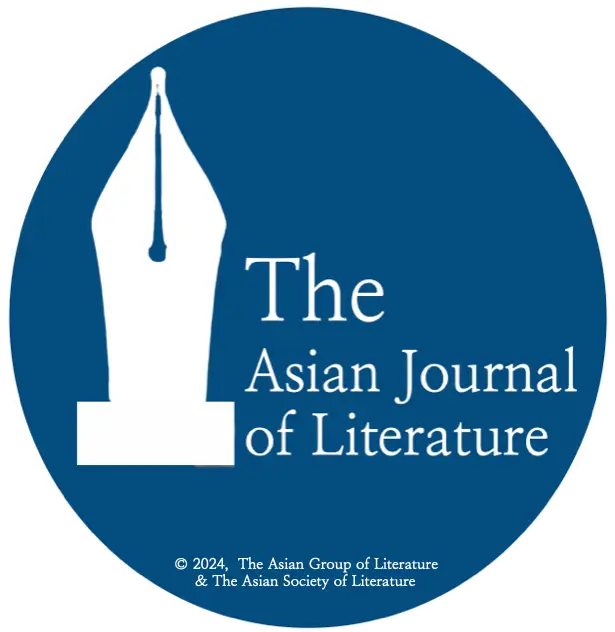By Rupasinghe P. D, Rahman F. E, Ojema M.
Abstract
This paper examines the relationship between engagement with fiction and poetry and the development of interpersonal and intrapersonal intelligence. Drawing on empirical evidence from peer-reviewed research, it explores how literary engagement fosters empathy, social cognition, and self understanding. The findings suggest that reading fiction and poetry constitutes a significant pathway for enhancing emotional intelligence and social acuity, with implications for educational practice and personal development. Particular attention is paid to the cognitive and neurological mechanisms through which literary engagement cultivates psychological insight and social understanding.
1. Introduction
The capacity to comprehend both oneself and others—what Gardner (1983) termed intrapersonal and interpersonal intelligence, respectively—stands as a cornerstone of human social functioning. Whilst technological advances continue to reshape modern communication, the question of how we develop these fundamental intelligences remains vital. This paper examines the empirical evidence supporting the notion that engagement with fiction and poetry plays a critical role in cultivating these capacities.
Fiction and poetry, by their nature, immerse readers in alternative perspectives and emotional landscapes. Through narrative, readers temporarily inhabit the minds of characters, experiencing their desires, fears, and moral dilemmas. This "simulation" of social experience has been hypothesised to enhance social cognition and empathic understanding (Mar & Oatley, 2008). Similarly, poetry's introspective qualities may foster self-reflection and emotional awareness, key aspects of intrapersonal intelligence.
This review synthesises recent empirical research on these relationships, drawing from cognitive psychology, neuroscience, and literary studies to establish a comprehensive understanding of how literary engagement shapes our understanding of self and others.
2. Theoretical Framework
2.1 Multiple Intelligences and Social Cognition
Howard Gardner's theory of multiple intelligences (1983) provides a useful framework for understanding the distinct yet interrelated capacities for self-understanding (intrapersonal intelligence) and social awareness (interpersonal intelligence). These capacities align with contemporary constructs in social cognition research, including theory of mind (ToM)—the ability to attribute mental states to others (Premack & Woodruff, 1978)—and emotional intelligence (Salovey & Mayer, 1990).
2.2 Fiction as Simulation
Oatley's (1999) conceptualisation of fiction as "simulation" offers a compelling explanation for fiction's impact on social cognition. According to this view, fiction serves as a laboratory for social experience, allowing readers to simulate encounters with diverse personalities and social scenarios. Mar and Oatley (2008) further developed this framework, proposing that fiction functions as both abstraction and simulation of social experience, offering readers models of human psychology and social dynamics that inform real-world understanding.
3. Fiction Reading and Interpersonal Intelligence
3.1 Empirical Evidence on Fiction and Empathy
Numerous studies have demonstrated associations between fiction reading and empathic abilities. In a landmark study, Kidd and Castano (2013) found that reading literary fiction temporarily enhanced participants' performance on tests of theory of mind compared to non-fiction or popular fiction. This suggested that the psychological complexity characteristic of literary fiction may prompt readers to engage more deeply with characters' mental states.
The relationship appears to be consistent across diverse measures of empathy. Mar et al. (2009) found that lifetime exposure to narrative fiction predicted higher scores on the Interpersonal Reactivity Index, a measure of empathic tendencies, even after controlling for demographic variables and personality traits. This association was specific to fiction, not emerging for non-fiction exposure.
More recent work by Dodell-Feder and Tamir (2018) surveyed 123 studies examining relationships between fiction and social cognition, finding that fiction engagement was consistently associated with enhanced empathy and theory of mind across diverse methodologies and samples. Their meta-analysis revealed a small but significant effect size (r = 0.20), suggesting that fiction reading accounts for approximately 4% of the variance in social-cognitive abilities.
3.2 Neurological Evidence
Neuroimaging studies provide further insight into the mechanisms underlying fiction's impact on interpersonal understanding. Tamir et al. (2016) used functional magnetic resonance imaging (fMRI) to demonstrate that brain networks associated with social cognition—including the dorsomedial prefrontal cortex and temporoparietal junction—were activated during story comprehension. Importantly, individuals who engaged these neural networks more strongly during reading demonstrated better social-cognitive abilities in separate behavioural tests.
3.3 Deep Reading and Narrative Transportation
The concept of "deep reading"—immersive, attention-intensive engagement with text—appears critical to fiction's empathy-enhancing effects. Bal and Veltkamp (2013) found that empathy increased after reading fiction only when readers experienced "narrative transportation"—a state of cognitive, emotional, and imaginative immersion in the story world. This finding suggests that passive exposure to fiction is insufficient; rather, active engagement with narrative is necessary for social-cognitive benefits to emerge.
4. Poetry and Intrapersonal Intelligence
4.1 Empirical Research on Poetry and Self-Understanding
Whilst fiction has received more empirical attention, emerging research suggests poetry may uniquely foster intrapersonal intelligence. Davis (2019) found that a six-week poetry reading intervention significantly increased participants' emotional awareness and introspective capacity compared to a non-reading control group. Participants reported enhanced ability to identify and articulate complex emotional states following regular poetry engagement.
4.2 Poetry and Linguistic-Emotional Processing
Poetry's distinctive formal qualities—including metaphor, ambiguity, and compressed expression—appear to engage uniquely with emotional and linguistic processing. Zeman et al. (2013) used fMRI to demonstrate that poetry activates brain regions associated with introspection and autobiographical memory more strongly than prose. This suggests poetry may prompt deeper self-referential processing than other textual forms.
Wassiliwizky et al. (2017) found that reciting poetry elicited a distinct pattern of neural activation and physiological response characterised by "chills"—a pleasurable frisson often associated with emotional intensification. This phenomenon was linked to activation in reward circuitry (nucleus accumbens) alongside emotional processing regions, suggesting poetry offers a unique form of emotional engagement that may foster intrapersonal development.
4.3 Therapeutic Applications: Bibliotherapy and Poetry Therapy
The potential for poetry to enhance self-understanding has found practical application in therapeutic contexts. A systematic review by Heimes (2011) examined 24 studies of poetry therapy interventions, finding consistent evidence for improvements in emotional awareness, self-expression, and psychological well-being across diverse populations. Similarly, Montgomery and Maunders (2015) conducted meta-analysis of bibliotherapy interventions (including poetry), finding moderate effect sizes for improvements in self-concept (d = 0.49) and emotional self-regulation (d = 0.35).
5. Developmental Perspectives
5.1 Early Development of Social-Cognitive Skills
The relationship between literary engagement and social-cognitive development begins in childhood. Aram and Aviram (2009) found that parent-child shared reading of picture books at age 4 predicted children's theory of mind abilities at age 6, controlling for socioeconomic status and language ability. Similarly, Adrian et al. (2007) demonstrated that parents' use of mental state language during shared reading predicted children's later understanding of emotions and beliefs.
5.2 Adolescent Identity Development
Fiction and poetry may play particularly important roles during adolescence, when identity formation constitutes a central developmental task. Koopman and Hakemulder (2015) found that adolescents who engaged with literary fiction demonstrated greater self-insight and identity clarity compared to peers who primarily consumed non-literary texts. This relationship was mediated by the degree to which readers reported identification with literary characters, suggesting fiction provides models for identity exploration.
6. Educational Implications
6.1 Literary Education and Social-Emotional Learning
Research suggests that structured literary education enhances the social-cognitive benefits of reading. Kidd et al. (2016) found that university students who participated in literature seminars showed greater improvement in empathic accuracy than students in science courses, with gains correlating with depth of textual analysis. This suggests that guided engagement with literature—including close reading and interpretive discussion—may amplify its effects on interpersonal intelligence.
6.2 Cross-Cultural Literary Exposure
Exposure to literature from diverse cultural traditions appears particularly valuable for developing cultural empathy. Johnson et al. (2013) found that reading narratives depicting cross-cultural encounters reduced implicit bias and increased perspective-taking toward cultural outgroups. This effect was stronger for literary texts than for expository texts on similar cultural topics, suggesting narrative form plays a crucial role in fostering cross-cultural understanding.
7. Limitations and Future Directions
Despite compelling evidence for relationships between literary engagement and social-cognitive development, several limitations merit consideration. Many studies rely on correlational designs, making causal inferences problematic. Self-selection effects remain a significant concern—individuals with stronger social-cognitive abilities may gravitate toward literary fiction, rather than literary fiction enhancing these capacities.
Additionally, measurement challenges persist. Reliance on self-report measures of reading habits introduces potential response biases, while laboratory-based empathy assessments may not capture real-world social functioning. Future research would benefit from longitudinal designs, more diverse samples, and ecologically valid outcome measures.
Promising directions for future inquiry include examining how different literary genres and styles influence specific aspects of interpersonal and intrapersonal intelligence, investigating potential developmental windows when literary engagement proves most impactful, and exploring how digital reading technologies affect the social-cognitive benefits of literary engagement.
8. Conclusion
The empirical evidence reviewed herein substantiates the notion that engagement with fiction and poetry contributes meaningfully to the development of interpersonal and intrapersonal intelligence. Fiction appears to enhance empathy and social understanding by simulating diverse social experiences and prompting readers to model the mental states of characters. Poetry, with its emphasis on emotional expression and linguistic specificity, appears particularly conducive to self-understanding and emotional awareness.
These findings have significant implications for educational practice, suggesting that literary education serves not merely aesthetic or academic purposes but also constitutes a vital pathway for social-emotional development. As technological and cultural shifts reshape reading practices, understanding how literary engagement fosters fundamental human capacities for self-knowledge and social connection becomes increasingly important.
References
Adrian, J. E., Clemente, R. A., Villanueva, L., & Rieffe, C. (2007). Parent-child picture-book reading, mothers' mental state language and children's theory of mind. Journal of Child Language, 32(3), 673-686.
Aram, D., & Aviram, S. (2009). Mothers' storybook reading and kindergartners' socioemotional and literacy development. Reading Psychology, 30(2), 175-194.
Bal, P. M., & Veltkamp, M. (2013). How does fiction reading influence empathy? An experimental investigation on the role of emotional transportation. PloS One, 8(1), e55341.
Davis, P. (2019). Reading for life: High quality literacy instruction for all. Routledge.
Dodell-Feder, D., & Tamir, D. I. (2018). Fiction reading has a small positive impact on social cognition: A meta-analysis. Journal of Experimental Psychology: General, 147(11), 1713-1727.
Gardner, H. (1983). Frames of mind: The theory of multiple intelligences. Basic Books.
Heimes, S. (2011). State of poetry therapy research. The Arts in Psychotherapy, 38(1), 1-8.
Johnson, D. R., Huffman, B. L., & Jasper, D. M. (2013). Changing race boundary perception by reading narrative fiction. Basic and Applied Social Psychology, 35(1), 25-33.
Kidd, D. C., & Castano, E. (2013). Reading literary fiction improves theory of mind. Science, 342(6156), 377-380.
Kidd, D. C., Ongis, M., & Castano, E. (2016). On literary fiction and its effects on theory of mind. Scientific Study of Literature, 6(1), 42-58.
Koopman, E. M., & Hakemulder, F. (2015). Effects of literature on empathy and self-reflection: A theoretical-empirical framework. Journal of Literary Theory, 9(1), 79-111.
Mar, R. A., & Oatley, K. (2008). The function of fiction is the abstraction and simulation of social experience. Perspectives on Psychological Science, 3(3), 173-192.
Mar, R. A., Oatley, K., & Peterson, J. B. (2009). Exploring the link between reading fiction and empathy: Ruling out individual differences and examining outcomes. Communications, 34(4), 407-428.
Montgomery, P., & Maunders, K. (2015). The effectiveness of creative bibliotherapy for internalizing, externalizing, and prosocial behaviors in children: A systematic review. Children and Youth Services Review, 55, 37-47.
Oatley, K. (1999). Why fiction may be twice as true as fact: Fiction as cognitive and emotional simulation. Review of General Psychology, 3(2), 101-117.
Premack, D., & Woodruff, G. (1978). Does the chimpanzee have a theory of mind? Behavioral and Brain Sciences, 1(4), 515-526.
Salovey, P., & Mayer, J. D. (1990). Emotional intelligence. Imagination, Cognition and Personality, 9(3), 185-211.
Tamir, D. I., Bricker, A. B., Dodell-Feder, D., & Mitchell, J. P. (2016). Reading fiction and reading minds: The role of simulation in the default network. Social Cognitive and Affective Neuroscience, 11(2), 215-224.
Wassiliwizky, E., Koelsch, S., Wagner, V., Jacobsen, T., & Menninghaus, W. (2017). The emotional power of poetry: Neural circuitry, psychophysiology and compositional principles. Social Cognitive and Affective Neuroscience, 12(8), 1229-1240.
Zeman, A., Milton, F., Smith, A., & Rylance, R. (2013). By heart an fMRI study of brain activation by poetry and prose. Journal of Consciousness Studies, 20(9-10), 132-158.




